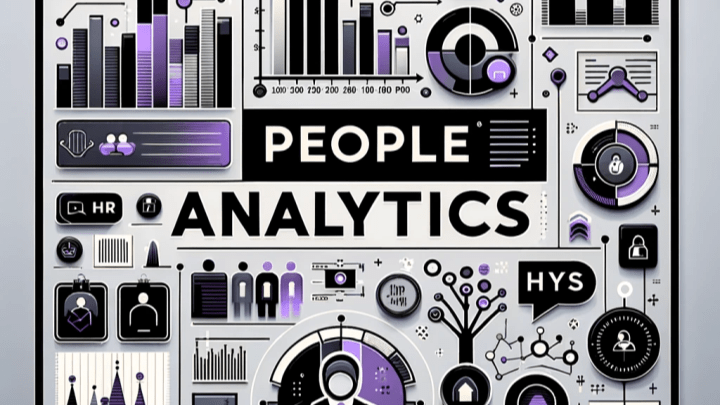Most organisations will use HR Metrics as part of their HR reports. They are things like sickness absence rates, employee turnover (how many people are leaving) and where our job applicants find out about our vacancies.
Fewer people are aware of ISO 30414:2018 – Human resource management – Guidelines for internal and external human capital reporting. This is a lengthy way of saying it’s a standard on HR Metrics and reporting. As an international standard, it brings with it a wealth of benefits, not least of which is an external certification saying you meet the standard.
But why am I interested in this?
Over the course of my career, I have contributed to or written entirely, HR reports that are provided to the Board, senior managers etc. I’ve built dashboards in Excel to make managing the reporting easier and worked with IT Directors to begin to use the business reporting mechanism.
In my experience, HR reports are a couple of lines of text and then some graphs highlighting some metrics. Yet they can be so much more! Metrics within HR interlink with each other but also with other departments and that is where the real power of metrics is, consider this from my experience:
A manager is constantly recruiting staff, using any agency that waves a CV in his email, using a test HR wasn’t allowed to see and planning a restructure (that HR wasn’t involved in). In a senior management meeting, I explained that the recruitment budget is gone. It has been wiped out 2 months into the financial year. The preceding slide to this was employee turnover. This manager had a 70% employee turnover rate in a team of 10. On average a new recruit to this team was about £10,000. The restructure was adding 4 more positions to the team to cover shift work.
There were low employee engagement scores, a low number of near-miss incidents being reported, an increase in accidents and poor reports from the agencies that said people wouldn’t work for the company.
The outcome of this was the Finance Director moved budget from the manager’s budget back to my budget so the rest of the organisation could use agencies that year, the entire recruitment process in the team was reviewed and improved, the team were re-briefed about near miss reporting and the manager was asked to attend some training to deal with how the team was run. It gave me a basis to start working with the other departments on how to better support them – one of those initiatives was to install an IT help desk system into the HR department to see the volume of work coming in and to automate some manual processes making them GDPR compliant in the process.
HR should be, in my opinion, at the heart of the organisation yet it is often seen as a cost centre. The HR team have a wealth of data at their fingertips and by linking with other departments, can really change how they are perceived in an organisation.
There is no reason that the HR team can’t share limited and/or anonymised data with other departments. Think about the following:
- Forecasting the number of leavers for the following financial year
- to share with finance to determine the recruitment budget
- to share with IT to arrange the necessary equipment
- to share with facilities for a desk to be assigned
- to share with H&S to arrange the necessary PPE
- Working with Sales & Marketing to see when promotions are going to happen to assess the workforce requirements
- Working with all the departments about any planned growth
- Looking at the skills of existing staff against what is needed to generate development/talent plans
In 2021, I was fortunate to be the first auditor to participate in an audit against the ISO30414 standard. I worked alongside the lead auditor and between us, we determined that the reporting both internally and externally met the standard. But what were we looking for?
We looked to see if the policies in place met with legislation and whether the reporting also covered what was required. This was an interesting part as the organisation operates in three different countries.
We determined whether the organisation should be measured against the SME requirements. This isn’t defined within the standard as it is left to the country to determine. In the UK for instance, I would look to the Companies Act for a definition. We talked about what information should be made public and what shouldn’t. The standard has guidelines for this.
We then looked at the metrics and worked through the documents provided to see what the organisation had already covered in their work and what needed further work.
The audit works on a Red/Amber/Green (RAG) process where red is not present, amber requires more work and green meets the standard.
After the initial audit, there were several places that were red or amber and we provided a list of HR consultants that the organisation could work with to move them on to a second and final certification audit.
The organisation has published part of its final report whilst keeping some sections as only for the organisation. You can see more at https://jetruby.com/iso/. Their HR Manager also wrote a testimonial for me:
“I worked with Emma during our auditing process to certify JetRuby according to ISO 30414 Human Capital Reporting and ISO 10018 People Engagement. Emma was our auditor together with David Simmonds. This was our first ISO audit. And, if I’m not mistaken, it was one of the first ISO 30414 audits in the world, since the standard was issued about a year before. It was a challenge for us. Emma carefully and thoroughly reviewed the pile of documents we provided. She was very helpful and attentive. She took care to answer our questions and to provide detailed feedback. We managed to complete the audit within three months and a lot of credit goes to Emma for that.
I highly recommend Emma as a great HR expert and a dedicated professional.”
As part of my focus on #peopleanalytics, I partnered with Edligo having had a chat with them and seeing the software that they offer.
It is a fabulous #Talentanalytics platform offering competency, learning & development, performance management and workforce planning to larger organisations.
These four areas are going to be key over the coming years as the world of work continues to change as a result of economics, people entering and leaving the workforce, people taking charge of their own development rather than relying on the organisation to provide opportunities and of course, the shift from office to hybrid or fully remote working.




